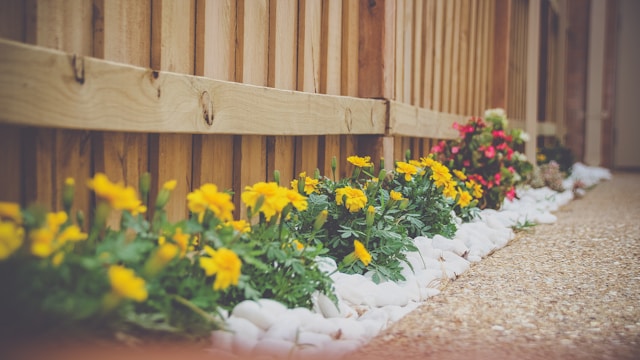
The Importance of Sustainable Landscaping: Embracing Eco-Friendly Practices for a Healthier Planet
Key Takeaways:
- Understanding sustainable landscaping and its environmental importance.
- Exploring the key components and design principles of sustainable gardens.
- Examining the financial and social benefits that eco-friendly landscaping offers.
Table of Contents:
- Introduction to Sustainable Landscaping
- Why Sustainable Landscaping Matters
- Critical Components of Sustainable Landscaping
- Design Principles for Sustainable Gardens
- Sustainable Landscaping Techniques and Practices
- Financial and Social Benefits of Eco-Friendly Landscaping
- Challenges and Considerations in Sustainable Landscaping
- Getting Started with Sustainable Landscaping
- Success Stories in Sustainable Landscaping
- The Future of Landscaping: Trends and Innovations
Introduction to Sustainable Landscaping
The significance of sustainable landscaping will only increase as we become more conscious of our environmental impact. Unlike traditional landscaping styles, sustainable landscaping emphasizes using designs, materials, and practices that work harmoniously with local ecosystems, conserving resources and enhancing biodiversity. In regions such as St. Louis, Missouri, where community awareness and economic factors encourage environmental consideration, these eco-friendly approaches shape how communities view their outdoor spaces. By adopting more informed choices, homeowners enhance their property’s aesthetic and contribute positively to the local flora and fauna.
Why Sustainable Landscaping Matters
The decisions we make for our gardens go far beyond the superficial. Residential landscape services St Louis MO, foster an environment that reduces water usage, clears harmful chemicals, and yields a sanctuary for native wildlife. The results are compelling: healthier ecosystems, increased biodiversity, and a tangible contribution towards mitigating climate change effects. The addition of each sustainable garden acts as a microcosm of change, showcasing the potential for positive human-environment interactions. Studies and articles, like those published by The Nature Conservancy, further cement the pivotal role of sustainable landscaping in the fight against climate change. By embracing these practices, we examine the broader strokes of our environmental impact and take significant steps to reverse the damage wherever possible.
Critical Components of Sustainable Landscaping
The foundation of sustainable landscaping is built upon several key components. Firstly, incorporating native plants into your garden is crucial; these species have evolved to flourish in the local climate and soil conditions, requiring less water and fertilizer than their non-native counterparts. Water conservation is another cornerstone, which can be achieved through inventive landscaping designs that efficiently use rainwater and minimize evaporation. Employing organic materials for mulching and composting also nurtures soil health, supporting a more resilient plant life. Each aspect works together to create an interdependent system that sustains itself with minimal intervention.
Design Principles for Sustainable Gardens
Effective sustainable garden design begins with assessing the land’s natural features, considering shade, wind patterns, and local wildlife. This initial step informs decisions about plant placement, water management, and material selection, ensuring the garden’s integration with the surrounding ecosystem. Soil health is a priority in sustainable design; healthy soil supports robust plant growth and better water absorption, reducing the need for additional watering. Thoughtful plant choices also reduce the need for chemical fertilizers and pesticides, as native plants are better attuned to their environment and more resistant to local pests.
Sustainable Landscaping Techniques and Practices
Xeriscaping, a term coined in the western United States, is a pioneering technique that emphasizes landscaping with plants that require minimal water, if any, beyond what nature provides. This practice, applicable in regions with water scarcity, conserves precious resources and reduces homeowners’ utility costs. Similarly, rainwater harvesting systems, ranging from simple barrels to more advanced cisterns, provide an alternative water source for landscaping needs. Furthermore, natural pest control strategies, such as encouraging beneficial predators and planting pest-resistant flora, help maintain a balanced, healthy garden ecosystem without harmful insecticides.
Financial and Social Benefits of Eco-Friendly Landscaping
Sustainable landscaping is economically advantageous in multiple ways. Lower utility costs are just the beginning; long-term savings manifest in reduced maintenance requirements and landscaping expenses. In addition, sustainable landscapes often increase property values, appeal to eco-conscious buyers, and add curb appeal through unique, engaging designs. The social impact of such landscaping practices must be balanced. These green spaces serve as communal assets that bolster neighborhood pride and awareness. Educational opportunities naturally arise, allowing community members to learn about and engage with sustainability principles. EPA Green Infrastructure confirms that green landscaping can improve businesses by demonstrating a commitment to sustainability that resonates with customers and clients.
Challenges and Considerations in Sustainable Landscaping
Despite the advantages, the pivot to sustainable landscaping can present challenges. Pairing new knowledge with action might be daunting for those accustomed to conventional methods. Overcoming dubious views about the aesthetics of sustainable gardens or the perceived higher costs of initial setup is also crucial. However, these challenges can be addressed with access to copious resources and experts in the field. Landscapers specializing in eco-friendly approaches can demystify the process, offering practical solutions and demonstrating the attainable beauty of sustainable designs.
Getting Started with Sustainable Landscaping
For novices eager to transform their outdoor spaces, the journey towards sustainability begins with observation and research. Understanding the intricate details of your local environment is fundamental. It enables tailored solutions that align with your specific context. Partnerships with experts in sustainable landscaping can provide transformative insights and methodologies. Additionally, community workshops and local initiatives offer grassroots opportunities to learn and engage with this ethos of landscaping. To embrace this change means to accept a shift in perspective, viewing one’s land not just as a canvas for beauty but as an integral part of the broader ecological network.
Success Stories in Sustainable Landscaping
Across the country, numerous success stories illustrate the impact of sustainable landscaping. Residential homes that have transitioned to drought-resistant gardens, commercial properties that have replaced traditional lawns with native plantings, and community projects that have revitalized public spaces stand as a testament to the transformative power of green landscaping. These endeavors signify a collective movement, showing what is achievable one garden at a time. They send a powerful message of hope and empowerment to communities, urging them to consider their potential for positive environmental influence.
The Future of Landscaping: Trends and Innovations
The horizon of sustainable landscaping is ever-expanding. Each year brings new materials, tools, and strategies that make eco-friendly gardening more accessible and practical. From more brilliant irrigation technologies that use weather data to optimize watering to landscaping materials made from recycled products, innovation is constantly reshaping this field. Political advocacy is also becoming increasingly significant, with policies around water usage and green space requirements guiding future developments. With these continued advancements, a future where sustainable landscaping is the industry standard is well within reach, promising healthier communities and ecosystems for generations to come.





